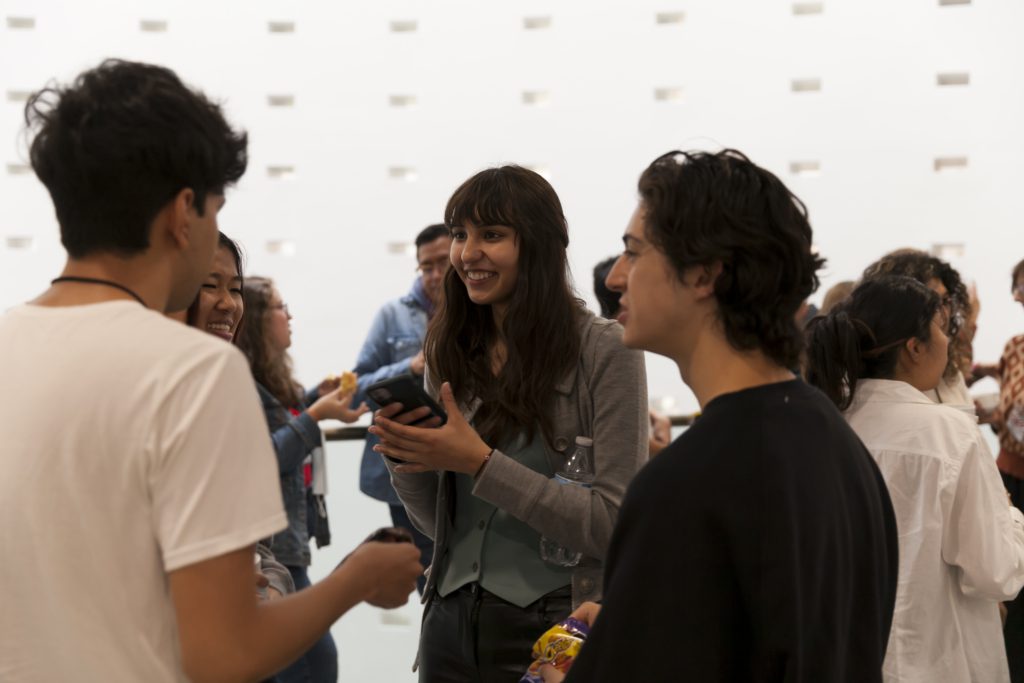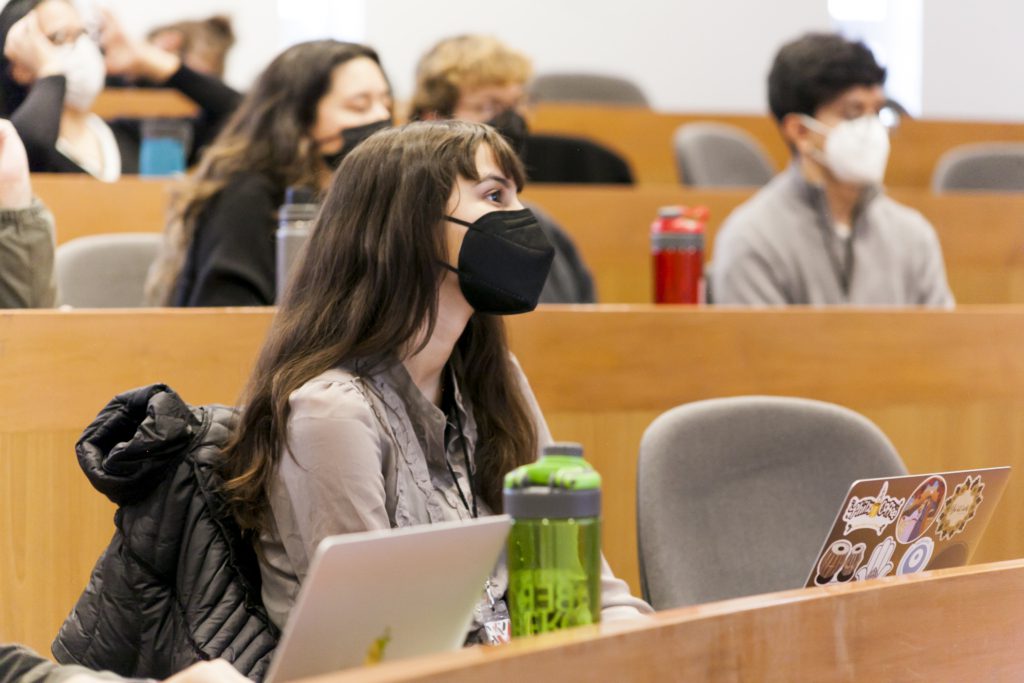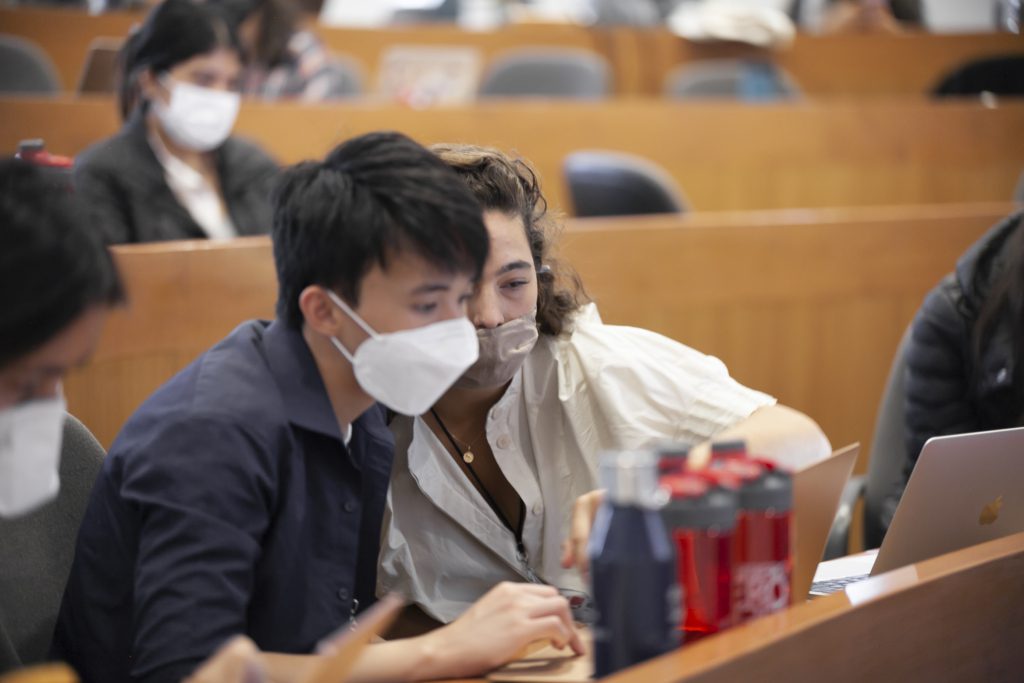Amnesty International investigations usually involve the work of at least half-a-dozen people. In projects where we engage our network of student volunteers, the Digital Verification Corps [DVC], those numbers more than triple.
More than 100 students across five universities (the University of Berkeley; the University of Cambridge; the University of Essex; Universidad Iberoamericana; and the University of Pretoria) are trained by Amnesty in open source research each year. Coordinated by student leads, they meet weekly to carry out investigations which contribute directly to Amnesty’s human rights work. These include the award-winning Tear Gas investigation, work on the internet shutdowns in Iran, and the analysis War on Raqqa: Rhetoric Versus Reality.
Each university team is led by two student coordinators who oversee the recruitment, training, project management and welfare of their peers. We’ve asked them to share what they’ve learnt from their experience of running the large teams. These lessons reveal how coordinating successful open source research is not solely about technical skill: it is underpinned by communication, community and teamwork.
1. Clear communication channels help look after the team’s welfare

New members of the DVC undergo extensive training on the risks of, and mitigation for, vicarious trauma. Coordinating the Cambridge DVC, we’ve learnt that foregrounding welfare is an essential part of conducting an effective human rights investigation.
This became especially clear over the past few months, as we worked on a sequence of global human rights catastrophes unfolding in Ukraine, Ethiopia and Myanmar. The ongoing nature of these human rights abuses, and the overwhelming quantity of content, made this work uniquely consuming. In this context, the mitigation strategies we had learned during training became essential. These included adding content descriptions, turning off the sound when it wasn’t necessary, avoiding watching videos in full screen, or taking regular breaks.
While these quick tips are useful in specific cases, an effective way to deal with the cumulative toll of working on human rights issues is to talk about them. In our team, we encourage this in three ways:
- Where possible, we run the majority of sessions in person, helping to create a sociable atmosphere across the team and form genuine friendships that exist beyond the DVC.
- We take regular breaks and have a wind-down chat every session, where we encourage people to share what they’ve been working on, and tell others about their successes and failures.
- We have a welfare officer who supplies everyone with their contact details when they join the team. Students can reach out to them anonymously or directly. The welfare officer also organises compulsory, termly one-on-ones with each team member. That way, there’s a dedicated space to debrief regularly, regardless of whether students reach out for it.
Making time to talk is not just a welfare strategy, but a way to learn from each other, share tools and build friendships. Each DVC member is doing work that can be difficult to understand from the outside, meaning our teammates are often best placed to identify and support each other’s needs.
2. Collaborative working fosters volunteer commitment

In the Essex DVC, we have found that our team members are constantly divided between their DVC workload and their studies, with the latter often taking priority. Therefore, over the past year we have tried to create conditions which encourage collaborative participation and centre teamwork. This has helped create the social bonds and enjoyable atmosphere that encourage commitment.
To do this, we introduced a second, optional ‘work session’ every week, to cater to members who are not free to attend the mandatory weekly meeting. The time and place of the second meeting was flexible. We also split the team into smaller groups of three or four, based on individual schedules. Each group worked together on one piece of content or one set of investigation parameters. For each investigation, we had students with relevant language and cultural skills work across multiple teams.
As coordinators, we tried to lead by example and model effective communication through regularly sharing relevant findings on Slack. Using .dmz exports from Google Earth Pro was a great way for visualising and communicating research leads across groups.
Structuring our unit around collaboration has strengthened teamwork amongst our members. As leaders, we continue to focus on remaining vocal in team channels and keeping members updated on the progress of each project and investigation.
3. Teaching flexible methodologies encourages creativity

There is no standardised way to post a photo or video online. In order to verify unique content, students at the Berkeley DVC often turn to creative solutions. Whether it’s using Wikimapia and city tours on YouTube for geolocation, or trying alternative search engines like Baidu for discovery, most of the innovative problem-solving techniques we’ve developed over the years have originated from the students.
We have learned that the best way to train students in problem solving and critical thinking is by making training sessions and projects as interactive and collaborative as possible. This allows students to bring their own ideas to traditional OSINT methods and learn from each other.
For example, when searching for content in foreign languages, it is often difficult to use translation tools as they do not capture slang. Therefore, students approach foreign language discovery projects intuitively. For example, creating a list of search terms from local news articles and native speakers. From there, some students might go through replies or comments on an initial finding and create a list of commonly used phrases/terms to use for further research. Others will find spelling variations on the original search terms and use those instead. Many then take the expanded list of search terms to platforms other than Twitter and Facebook – such as Reddit, Instagram and Tik Tok – and use them to find platform-specific search terms or hashtags that lead to a unique crop of findings. This process creates a wide-spanning list of search terms that enables the team to go on to discover a broad range of relevant content.
The benefits of these individual-led methodologies are incorporated into our trainings. For example, in our discovery training we start the team off with a handful of search terms and ask them to expand the list as they search. Individual team members then explain to others how they found relevant posts and search terms. By listening to and learning from one another, team members develop reflexive thinking skills, which improves the quality and creativity of their research.
4. Investing in the growth of volunteers boosts their motivation

Maintaining motivation amongst student volunteers has been a core challenge in the Ibero DVC. Volunteers often start off highly motivated, but interest and investment can decline over the course of a project.
To tackle this, we focused on creating a set routine for each term. This meant we could set student expectations around their commitment, and build in dedicated time for team-building and learning new skills. Both helped encourage continued participation. We scheduled regular project meetings, group workshops and extra trainings, where we made an active effort to listen to volunteer needs and cater to any gaps in their skills or interests. If we couldn’t help with a specific skill, we could bring in someone external, such as a member of the Evidence Lab.
We also made an effort to promote accountability by assigning certain jobs or tasks to volunteers, while always maintaining flexibility and openness to any struggles or issues that may come up along the way. Students now know what to expect and are accountable to the team, as well as benefiting from extra support and personal growth. These combine to incentivise their continued participation.
Reminding volunteers that their research efforts have real-world impact is also significant. For example, at the beginning of each new round of students, we shared and discussed with new volunteers the Tear Gas platform, one of the first projects we contributed to as a team. We continue this throughout the year by sharing the links to any published work we’ve contributed to and its impact.
5. Successful open source research involves asking for help and knowing when to move on

Open source investigations are always a puzzle. Verification can be particularly maddening, as you grow impatient looking for a particular store sign or the curve of a street. This can be demoralising for members of all the DVC teams at times, and we’ve learnt that sharing ideas with others and deciding when to move on are key parts of effective and sustainable open source research.
Sometimes you have to accept that not every puzzle is meant to be solved. But this can be tricky, as it is context-specific: there is no universal rule about when to move on. For example, when one team were helping to investigate violence against protesters in Colombia, they were struggling to geolocate a video that had been taken at night. They tried a variety of approaches, including reaching out to Colombian friends about the dialect in the video. Eventually, as a team, they concluded that the video might not be geolocatable, and it would be better to focus on other videos that demonstrated the same abuse and were more likely to be verified.
Before moving on, you may also like to pass the challenge along to a colleague to see if they can find a solution. Everyone has different approaches or skills and may spot something or try a technique you missed. It is also important to be mindful of the mental health needs of each individual team member, both in limiting exposure to distressing content and understanding personal energy levels. Open source investigations are best conducted by people who look after themselves, and this includes knowing when to move on.
Conclusion
Open source techniques in many ways expand the possibilities of human rights research, and give power to citizens to participate. But, as these experiences show, coordinating the teams who do this work poses challenges. Thanks to the coordinators’ continuous learning, they not only sustain the DVC’s meaningful contribution to Amnesty outputs, but also support a thriving network of hundreds of students.


